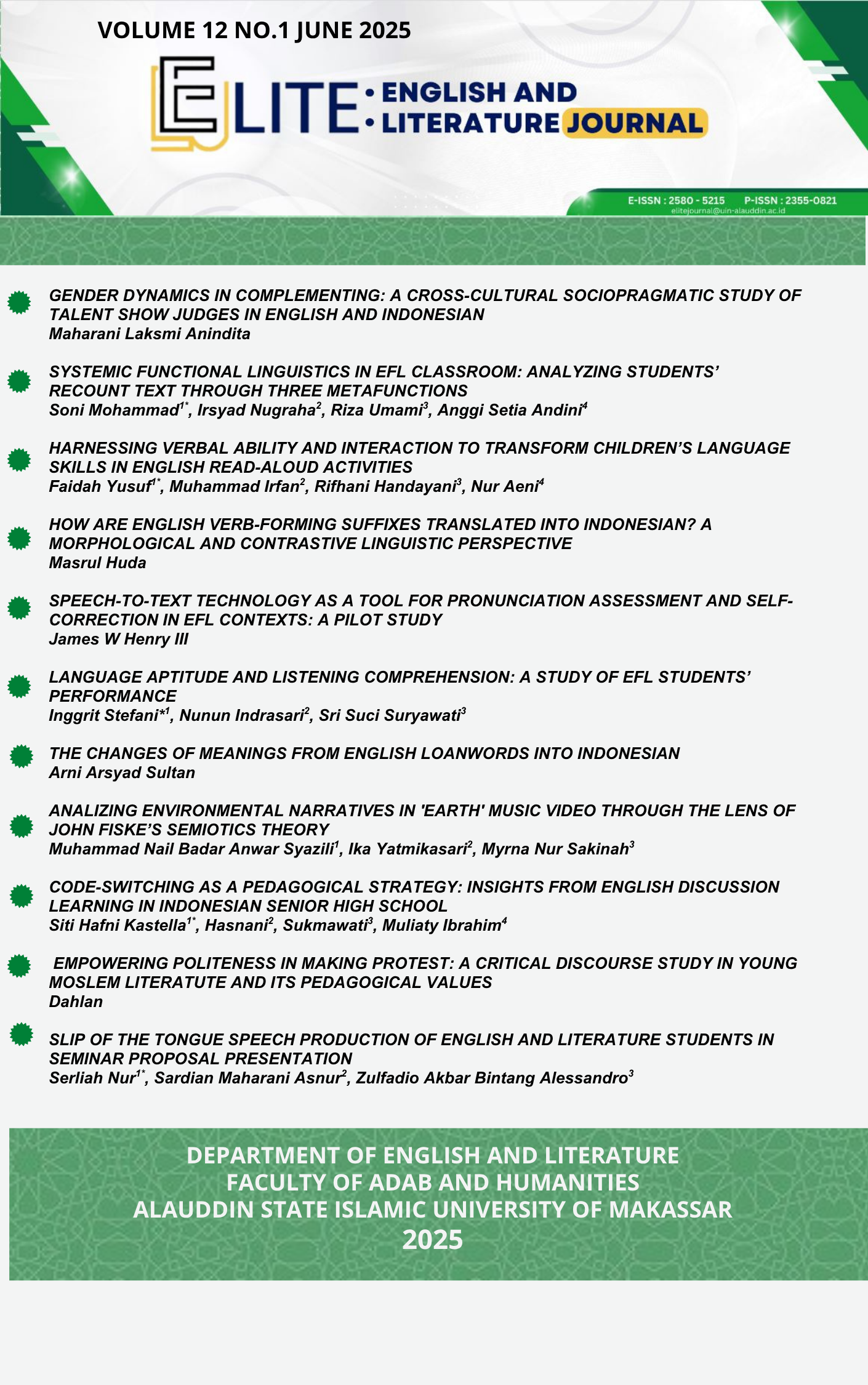CODE-SWITCHING AS A PEDAGOGICAL STRATEGY: INSIGHTS FROM ENGLISH DISCUSSION LEARNING IN INDONESIAN SENIOR HIGH SCHOOL
Keywords:
Discussion Learning , Function of Code-Switching, Type of Code-SwitchingAbstract
In daily communication, some individuals struggle to express their ideas due to language limitations. As a result, they often resort to code-switching. This phenomenon is also observed among students learning English. This study aimed to analyze the types and functions of code-switching used in English discussion-based learning. A qualitative descriptive method was employed in this research. The participants were 36 eleventh-grade students from the Language Class. Data were collected through observation and interviews. The findings revealed that students used three types of code-switching during discussions: intra-sentential switching, inter-sentential switching, and tag switching. Among these, intra-sentential switching was the most frequently used. Furthermore, the study identified four main functions of code-switching during discussions: emphasizing a point, substituting unknown words, reinforcing requests, and clarifying a point. The analysis indicated that the primary reason for code-switching was students’ limited English vocabulary. Additional linguistic challenges included poor grammar, unclear pronunciation, and a general lack of fluency in English. Consequently, code-switching plays a crucial role in the learning process, as it helps students better understand the material being discussed.
Downloads
References
Adhabi, E., & Anozie, C. B. (2017). Literature Review for the Type of Interview in Qualitative Research. International Journal of Education, 9(3), 1–12. https://doi.org/10.5296/ije.v9i3.11483
Downloads
Published
How to Cite
Issue
Section
License
Copyright (c) 2025 Siti Hafni Kastella, Hasnani, Sukmawati, Muliaty Ibrahim

This work is licensed under a Creative Commons Attribution-NonCommercial-ShareAlike 4.0 International License.
Once an article was published in the journal, the author(s) are:
granted to the journal right licensed under Creative Commons License Attribution that allows others to share the work with an acknowledgement of the work's authorship.
permitted to publish their work online in third parties as it can lead wider dissemination of the work.
continue to be the copyright owner and allow the journal to publish the article with the CC BY-NC-SA 4.0 license
receiving a DOI (Digital Object Identifier) of the work.













